
By Byron Betts
Our journey to “The Farm with a Beautiful View” began with nine hours of flight. From Seattle, on to Miami, and finally landing in Guatemala City. Joshua and I exited the airport to find Edwin Martinez, the owner of Finca Vista Hermosa awaiting our arrival. 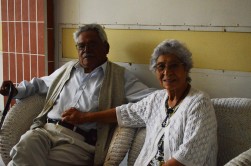 We got into the back of a truck and headed to his grandparents house in the middle of Guatemala City. We were greeted warmly by Felipe and Marta Martinez. Felipe started Finca Vista Hermosa in 1957. Within an hour we were on a bus, headed out to the town of Huehuetenango where Edwin Sr. was to meet us at the family home. (There is some amount of disagreement on what the name officially means, but “tenango” is reported to mean “place of”, while Huehue is something along the lines of “the ancients”. “Place of the Ancients” seems fitting with all of the incredible Mayan culture in the region.) The bus ride was a five hour venture along the Pan-American highway, also known to us as I-5. We were seated in the front row, giving us a vantage of the incredible landscape. Amazing music, consisting of a seventy-five minute nonstop mashup of popular American songs of the 80’s and 90’s played over the stereo. Everything from The Eagles “Hotel California” to Toto’s “Africa”, to “Bad Boys”.
We got into the back of a truck and headed to his grandparents house in the middle of Guatemala City. We were greeted warmly by Felipe and Marta Martinez. Felipe started Finca Vista Hermosa in 1957. Within an hour we were on a bus, headed out to the town of Huehuetenango where Edwin Sr. was to meet us at the family home. (There is some amount of disagreement on what the name officially means, but “tenango” is reported to mean “place of”, while Huehue is something along the lines of “the ancients”. “Place of the Ancients” seems fitting with all of the incredible Mayan culture in the region.) The bus ride was a five hour venture along the Pan-American highway, also known to us as I-5. We were seated in the front row, giving us a vantage of the incredible landscape. Amazing music, consisting of a seventy-five minute nonstop mashup of popular American songs of the 80’s and 90’s played over the stereo. Everything from The Eagles “Hotel California” to Toto’s “Africa”, to “Bad Boys”.
At about the half-way mark, we stopped at a little restaurant and store to rest and gain our composure. We were up in the mountains, just past the highest part of the Pan-American Highway. Many kilometers and close calls later (it’s amazing the velocity at which people drive on that highway as buses speed passed each other) we pulled into a razor wire and broken glass encl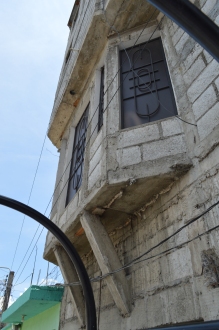 osure to disembark from the bus. This is where Edwin Sr. picked us up in a large blue van to take us the rest of the way to their home in Huehue. From the street, the house looks a little rugged. Unfinished concrete, rebar, and and miscellaneous wiring poked out of the building. This is how most of the buildings in Huehue looked, and according to Edwin Jr., this is how he always wants the outside of his family home to look. As we walked through the metal door, we were greeted by friends we didn’t even know we had. Hammocks swung by rebar hooks, and a large open area greeted us weary travelers. We sat down and met our new friends over dinner. The next morning found us wandering around the market in Huehue, taking in the sights and sounds. I always imagined Huehue to be a small village in the mountains of Guatemala, but in fact, it was a fairly large town in a valley surrounded by mountain ranges. The market was crowded, noisy, and full of smells ranging from flowers to diesel exhaust. I think I may have lost a few brain cells from all the diesel huffing in Huehue. In fact, I may be going through withdrawalllls now as I type thisssss. A few hours later, we all piled into the back of a truck and started the three hour journey to Finca Vista Hermosa.
osure to disembark from the bus. This is where Edwin Sr. picked us up in a large blue van to take us the rest of the way to their home in Huehue. From the street, the house looks a little rugged. Unfinished concrete, rebar, and and miscellaneous wiring poked out of the building. This is how most of the buildings in Huehue looked, and according to Edwin Jr., this is how he always wants the outside of his family home to look. As we walked through the metal door, we were greeted by friends we didn’t even know we had. Hammocks swung by rebar hooks, and a large open area greeted us weary travelers. We sat down and met our new friends over dinner. The next morning found us wandering around the market in Huehue, taking in the sights and sounds. I always imagined Huehue to be a small village in the mountains of Guatemala, but in fact, it was a fairly large town in a valley surrounded by mountain ranges. The market was crowded, noisy, and full of smells ranging from flowers to diesel exhaust. I think I may have lost a few brain cells from all the diesel huffing in Huehue. In fact, I may be going through withdrawalllls now as I type thisssss. A few hours later, we all piled into the back of a truck and started the three hour journey to Finca Vista Hermosa.
As the landscape passed by us, we saw rolling hills turn into steep inclines, and the other side of the road fall off to a river far below the edge of the highway. This is what I had been expecting- a freaky, dangerous road full of curves and cliffs. Hanging off of the back of a truck was completely exhilarating, and all of our hearts raced as fast as the cars, buses and motorcycles passing us by.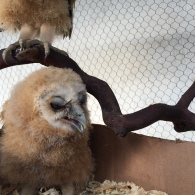 Within two hours we had reached the beginning of the dirt road that would take us the rest of the way up the mountain to Edwin’s farm. We stopped for a moment at the base of the road as a woman ran out of a house and gave us a bunch of hot chuchitos to share. These are similar to a tamale in appearance, wrapped in banana leaf and filled with chicken (bones and all). They were…incredible. As we continued up the mountain road, we immediately started noticing coffee trees lining the sides of the road. After about an hour, we arrived at the finca, and jumped off the back of the truck. The scene was like that of a movie- coffee everywhere, chickens running around and roosters cawing, and the mountainside covered in “snow”. It was about 80 degrees, so not really snow, but this is what Edwin called all the flowers that were covering the coffee plants.
Within two hours we had reached the beginning of the dirt road that would take us the rest of the way up the mountain to Edwin’s farm. We stopped for a moment at the base of the road as a woman ran out of a house and gave us a bunch of hot chuchitos to share. These are similar to a tamale in appearance, wrapped in banana leaf and filled with chicken (bones and all). They were…incredible. As we continued up the mountain road, we immediately started noticing coffee trees lining the sides of the road. After about an hour, we arrived at the finca, and jumped off the back of the truck. The scene was like that of a movie- coffee everywhere, chickens running around and roosters cawing, and the mountainside covered in “snow”. It was about 80 degrees, so not really snow, but this is what Edwin called all the flowers that were covering the coffee plants.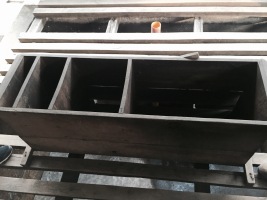 And it really did resemble freshly fallen snow along the mountainside. As soon as we were off the truck, we hauled our stuff into the “hotel” and immediately received a tour of the property. Edwin took us around to the wet mill & drying patios and explained their process of picking, sorting, fermentation and drying. We stopped to look at the “pay box” that sits above a large water tank. This is where the farm manager sits and determines how much a picker will receive in pay for the harvest. The box is divided into four units; a “full”, “half”, “quarter” and an “eighth”.
And it really did resemble freshly fallen snow along the mountainside. As soon as we were off the truck, we hauled our stuff into the “hotel” and immediately received a tour of the property. Edwin took us around to the wet mill & drying patios and explained their process of picking, sorting, fermentation and drying. We stopped to look at the “pay box” that sits above a large water tank. This is where the farm manager sits and determines how much a picker will receive in pay for the harvest. The box is divided into four units; a “full”, “half”, “quarter” and an “eighth”. 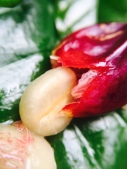 The picker will fill up the units and be paid for the amount they fill up. Once the number is determined, a release lever is pulled and all the cherries fall into the water bath for sorting. All the”over ripes” float, going down a separate channel and off to the side. The ripe cherries sink, and get sucked up by a siphon that then sends them to the de-pulper and the fermentation tanks, located about eight feet below the top platform. From the fermentation tanks and washing station, they are sent to the drying patio and spread out to be dried.
The picker will fill up the units and be paid for the amount they fill up. Once the number is determined, a release lever is pulled and all the cherries fall into the water bath for sorting. All the”over ripes” float, going down a separate channel and off to the side. The ripe cherries sink, and get sucked up by a siphon that then sends them to the de-pulper and the fermentation tanks, located about eight feet below the top platform. From the fermentation tanks and washing station, they are sent to the drying patio and spread out to be dried.
After touring the processing side, Edwin took us on a “little hike” around to the different lots on the farm. We almost died. Hiking at sea level is not quite hiking at 6,000 feet. The sounds of the roosters were drowned out by the slamming of our heart beats against our ribs by the time we reached the top of “El Bosque” (The Forest) lot. Edwin of course, was strolling up the hill with a cup of hot coffee in his hand the whole time. We stopped at a little level spot on the path to regain our composure, as Edwin talked about the goats they kept for a short time on the farm. He explained that the reason they wanted goats was for their manure as an organic fertilizer for the coffee. Unfortunately, the goats did not like it so high up in the mountains, and so they gave the goats away to a friend in exchange for the fertilizer they create. It was a win-win for both parties. At about the time the sun was starting to wane, Edwin decided to take us on a “short
cut” through the jungle on a small path to quickly see the Mirador lot. Unfortunately – or rather fortunately, this was not a short cut and we ended up having to retrace our steps on this path. However, the sun was now all but gone as well as the original path we had taken. It was this moment that I remembered why I had packed a flashlight, and wondered why I didn’t bring it with me. And I’m glad I didn’t. Soon, fireflies started flickering around, followed by lightning and thunder cracking the sky.
This – the darkness, the steep slopes we slid down, the fireflies and the flashing of lightning while navigating the coffee forest was the highlight of my adventure. We all talked about the rarity and special nature of what we were doing at that moment with great excitement – “who do you know that has ever gotten to do this?!” “this is the greatest thing I have ever seen!” “holy crap, we are going to die on a coffee farm!” It was exhilarating. The next day, we met a neighbor that owned an organic coffee and honey farm. Edwin had never officially met this individual before. He had met a few of his sons, but this was the first meeting between Edwin and Jorge Mendez. After a few hours of meeting all of us and sharing lunch with Jorge, it was decided that we would visit his farm the next day. About fifteen minutes down the road we jumped out of the truck and hiked up another road that was too muddy to drive up. The rains had moved in the night before; about a month earlier than they should have, and made the clay dirt too slick. 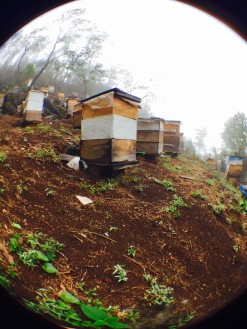 We walked passed a school house and met up with Jorge and two of his sons. They took us on a tour of the farm, and we stopped to check out some of his honey bee hives. As we marveled at the beautiful landscape that surrounded us, I decided to snap a few photos of the hives. I lined up my shot, trying to get a nice fish eye view with my Olloclip and iPhone, and was immediately stung on the hand by an angry little dude. The phone went flying, and a quick “oh shit!” escaped my lips. A few more bees started getting interested in what I was doing, flailing my arms and trying to keep the bees away from dive bombing me. Turns out, that is NOT what you should do when bees come a calling. “shhh! shhh!!” came from the sons and “down, down! Go quickly and quietly!” We made our way quickly, no one else was stung, and we continued on our tour without incident. Jorge led us to a building that was being used to store his parchment (coffee that has not been milled and has a type of “husk” on it.) We talked for a little while, and we noticed there were some instruments under a tarp. Joshua Boyt asked if they played, and we were told the sons had a band together. After a tiny but of persuasion, they agreed to play for us. Fifteen minutes later, four of the sons were all tuned up and playing some awesome music. The wives and daughters brought in a hot pot of “corn water” (we never got the official name of this beverage- it is exactly what it sounds like) for all of us and a large bucket of honey comb from the hives.
We walked passed a school house and met up with Jorge and two of his sons. They took us on a tour of the farm, and we stopped to check out some of his honey bee hives. As we marveled at the beautiful landscape that surrounded us, I decided to snap a few photos of the hives. I lined up my shot, trying to get a nice fish eye view with my Olloclip and iPhone, and was immediately stung on the hand by an angry little dude. The phone went flying, and a quick “oh shit!” escaped my lips. A few more bees started getting interested in what I was doing, flailing my arms and trying to keep the bees away from dive bombing me. Turns out, that is NOT what you should do when bees come a calling. “shhh! shhh!!” came from the sons and “down, down! Go quickly and quietly!” We made our way quickly, no one else was stung, and we continued on our tour without incident. Jorge led us to a building that was being used to store his parchment (coffee that has not been milled and has a type of “husk” on it.) We talked for a little while, and we noticed there were some instruments under a tarp. Joshua Boyt asked if they played, and we were told the sons had a band together. After a tiny but of persuasion, they agreed to play for us. Fifteen minutes later, four of the sons were all tuned up and playing some awesome music. The wives and daughters brought in a hot pot of “corn water” (we never got the official name of this beverage- it is exactly what it sounds like) for all of us and a large bucket of honey comb from the hives.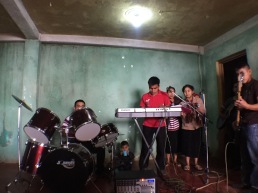 If you ever get the chance to try honey from coffee flowers- do it. Best honey I have ever had in my life! After a few songs, the sons asked if any of us played music, and if we could play for them. Joshua, Justin Page and Jeremy Wildhaber got up and played a few songs. Justin on the bass, Joshua on the guitar, and Jeremy, vocals. (Turns out, Jeremy is an incredible operatic vocalist, and also sang from the top of El Bosque for the world to hear. Did you hear it?) After the first song, we noticed our group was getting larger and larger- the kids from the school were all crowding around the windows and doors and inside the building, with big huge smiles on their faces. This trip was full of one-time experiences like this- for us and them. As we made our way down to the truck,
If you ever get the chance to try honey from coffee flowers- do it. Best honey I have ever had in my life! After a few songs, the sons asked if any of us played music, and if we could play for them. Joshua, Justin Page and Jeremy Wildhaber got up and played a few songs. Justin on the bass, Joshua on the guitar, and Jeremy, vocals. (Turns out, Jeremy is an incredible operatic vocalist, and also sang from the top of El Bosque for the world to hear. Did you hear it?) After the first song, we noticed our group was getting larger and larger- the kids from the school were all crowding around the windows and doors and inside the building, with big huge smiles on their faces. This trip was full of one-time experiences like this- for us and them. As we made our way down to the truck,
Edwin stayed behind to talk with Jorge for a little while longer. At the truck, we played with some of the school kids, whistling, playing peekaboo around the truck and having a good time. 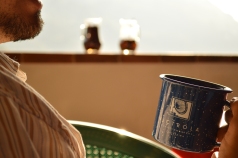 Then teacher came out of the school house with a yard stick and a smile, and they all scurried back inside, laughing all the way. We waved, apologized for being distracting and Edwin came back down the hill. “We just came to an agreement” he said as we
Then teacher came out of the school house with a yard stick and a smile, and they all scurried back inside, laughing all the way. We waved, apologized for being distracting and Edwin came back down the hill. “We just came to an agreement” he said as we 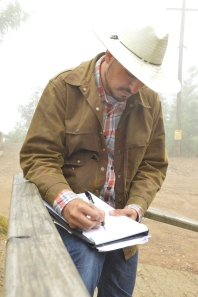 all jumped onto the back of the truck and drove away. “What kind of agreement?” someone asked. Turns out, Edwin had made a deal with Jorge to purchase his entire yield for this year. They had also named the arm, which previously had not had an official name. “El Piario”. Essentially this translates to “the beehive”. Definitely a fitting name. Edwin explained to us that typically, Jorge would make around 900 quetzal per pound of parchment by selling to the general market for his coffee. Edwin purchased his coffee for 1,400 quetzal per pound- more than he had ever made for his coffee.
all jumped onto the back of the truck and drove away. “What kind of agreement?” someone asked. Turns out, Edwin had made a deal with Jorge to purchase his entire yield for this year. They had also named the arm, which previously had not had an official name. “El Piario”. Essentially this translates to “the beehive”. Definitely a fitting name. Edwin explained to us that typically, Jorge would make around 900 quetzal per pound of parchment by selling to the general market for his coffee. Edwin purchased his coffee for 1,400 quetzal per pound- more than he had ever made for his coffee. 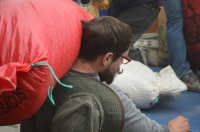 This is one of the best things about Edwin and the entire Martinez family- everything they do is about community, caring for people, and doing the best they can to represent for everyone involved. The next day, the Mendez’s showed up with a truckload of parchment. Edwin wrote up a contract by hand, and we loaded the coffee onto our truck to be taken down to the dry mill.
This is one of the best things about Edwin and the entire Martinez family- everything they do is about community, caring for people, and doing the best they can to represent for everyone involved. The next day, the Mendez’s showed up with a truckload of parchment. Edwin wrote up a contract by hand, and we loaded the coffee onto our truck to be taken down to the dry mill.
At the beginning of this adventure, I didn’t know exactly what to expect. I was going to visit a coffee farm- really cool in it of itself, but what I didn’t expect was getting the experience to see people working so closely together, to see an entire agreement get made from meeting for the first time to signing a contract and driving down the mountain with the coffee. Edwin currently represents about 40 family farms in Guatemala through his company Onyx Coffee. His company is based out of Bellingham, WA where he spends time with his wife and kids.
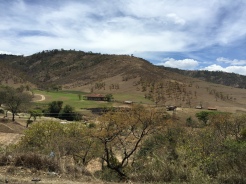
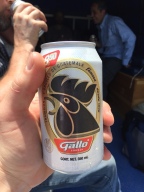
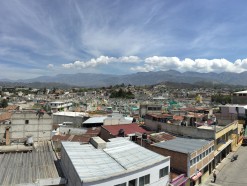
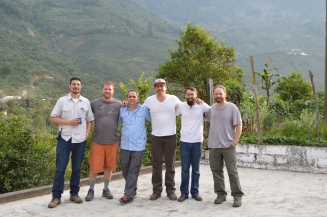
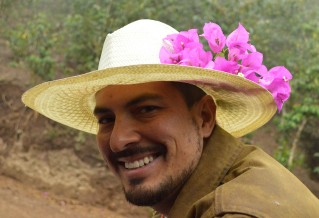
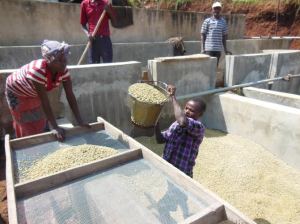
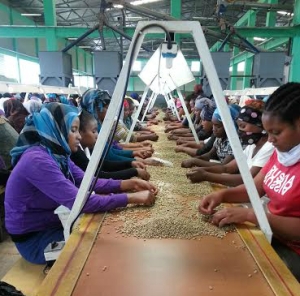
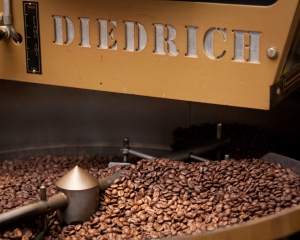
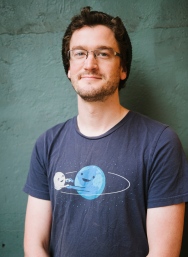
 It’s the weekend. Isn’t that awesome?!? You get to sleep in, or wake up early to catch the sunrise, take your day leisurely and enjoy that awesome cup of coffee as long as you want. Everything is perfect. Until you start sipping. Your coffee is bitter, stale, flat. This won’t do for you. It’s supposed to be perfect. The sunrise is beautiful. The chair in your backyard is amazing. But this coffee….
It’s the weekend. Isn’t that awesome?!? You get to sleep in, or wake up early to catch the sunrise, take your day leisurely and enjoy that awesome cup of coffee as long as you want. Everything is perfect. Until you start sipping. Your coffee is bitter, stale, flat. This won’t do for you. It’s supposed to be perfect. The sunrise is beautiful. The chair in your backyard is amazing. But this coffee….
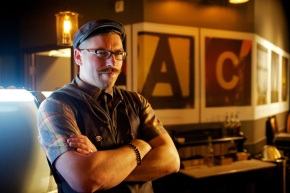
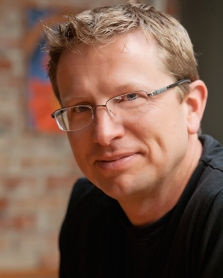
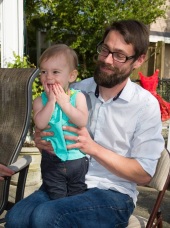
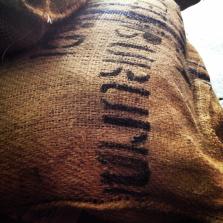
You must be logged in to post a comment.